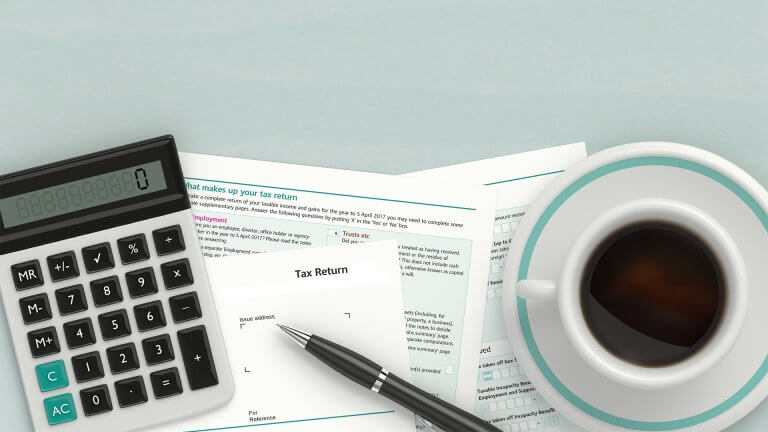
7 Of The Most Common Tax Mistakes (And How to Avoid Them)
Entrepreneurs are talented individuals. For many of them, however, wearing the many hats required to succeed in their role means there is little time left for the onerous aspects of the job. Under these circumstances, it can be all too easy for potentially costly tax mistakes to emerge. In fact, a 2019 survey suggests that 19% of those who completed a tax return in the past two years believe they may have made an error that resulted in lost income.
In this article, we’ll be taking a look at seven of the most common tax mistakes and how best to avoid them.
- Not Allowing for Allowances
Whilst the majority of people will be aware of the Personal Allowance, there are a variety of other allowances for you to take advantage of. An example of this is the Personal Savings Allowance, which entitles basic rate taxpayers to earn up to £1,000 worth of interest tax-free.
The extent of this allowance is dependent on the rate of tax you pay. Higher-rate taxpayers are subject to a reduced allowance of £500, whilst those in the 45% tax bracket cannot benefit from either a Personal Allowance or a Personal Savings Allowance. This is because these allowances are removed on a tapered basis in cases where a person’s income exceeds £100,000 per annum.
The range of allowances available doesn’t stop there. If you have capital assets at your disposal, you can generate a further £12,000 of gains before paying Capital Gains Tax on the profits. Self Employment and Rental Income Allowances are also available, allowing you to earn up to £1,000 tax-free from either of these income streams. If income exceeds £1,000, you can take a round sum, £1,000 deduction with no requirement for receipted expenses or claim actual expenses if this figure is higher.
There is also a Dividend Allowance available, which charges the first slice of dividend income at 0%. As such, it is perhaps better described as a tax rate rather than an allowance. Having said that, any freebie from HMRC is nonetheless worth taking.
- Counting the Cost of Expenses
Another way in which entrepreneurs miss out has to do with claiming expenses. Not every business cost is a tax-deductible expense, but there are a number of areas in which many business owners overlook making a legitimate claim.
Generally speaking, you can only claim relief for expenses on things that are used ‘wholly and exclusively’ in the business. However, there are some exceptions in cases where there is a split of use, for example in cases where you work from home or are using a personal car for work.
The expenses you’ll be able to claim will be calculated differently depending on whether you’re employed (possibly by your own company) or self-employed. You’ll only be able to claim for things for which you have not been reimbursed by your employer in order to avoid you receiving the same benefits twice.
It’s important to note that receiving tax relief doesn’t mean you’re getting an item for free – the reimbursement amount is dependent on your marginal tax rate. If you’re a basic-rate taxpayer, this means you could be refunded 20% of the cost, while higher-rate taxpayers may receive up to 40% of the cost back.
- Failing to Maximise Pension Contributions
It’s possible to secure extra tax relief through making the most of your pension contributions. While employer-funded contributions and those deducted from pay do not generate additional relief, you could get an extra bonus from the taxman if you make personal contributions into your own pension plan or self-invested personal pension (SIPP).
All contributions of this kind currently benefit from basic-rate tax relief at source, meaning that the benefit to people paying tax at this rate goes directly into their pension fund. Higher and additional-rate taxpayers may be entitled to further tax relief on personal contributions paid by claiming extra tax relief from HMRC.
There is a limit on the amount of pension contributions on which you can obtain tax relief during the tax year, although this doesn’t mean that you can’t contribute more. You can also carry forward unused allowances from the previous three years as long as you were a member of a pension scheme throughout that period of time.
- Missing Out on Readily Available Tax Reliefs
Many entrepreneurs are unaware of the range of tax breaks available to them, causing them to miss out on invaluable opportunities to reduce their tax bill. Common examples include Research & Development (R&D) Relief, Entrepreneurs’ Relief, Investors’ Relief and Business Relief on gifts. Whatever the case, enlisting professional tax advice can go a long way in helping you make a successful claim.
- Not Accounting for Payments on Account
Cash flow is a crucial consideration for any business, but personal tax cash flow is deserving of equal consideration. The majority of people are aware of the deadline for paying any outstanding tax bills, but unless 80% or more of your outstanding tax is deducted at source (e.g. for employees) or the amount due is less than £1,000, you will also need to make advance payments with regard to the following year’s tax liability.
Each instalment will generally be half of the previous year’s tax bill, with one half due on 31 January and the other on 31 July. This means that in January, you could be paying one-and-a-half times your annual tax bill. If you don’t believe your tax bill for the following year will be as high as it is now, you can ask HMRC to reduce your payments. However, if you underestimate the amounts due, HMRC will charge you interest back to the original date of payment.
- Not Making Charitable Donations
Whilst the primary reason for making a charitable donation is often altruistic, doing so can also provide you with a valuable tax break. The same can be said for the charity in question, with gift aid increasing the value of donations through allowing charities to reclaim the basic tax rate on your gift. In practice, this means that a gift of £100 would instead be worth £125 to the charity.
In a way that is similar to pension contributions, higher and additional-rate taxpayers can claim extra tax relief on charitable donations. If, for example, you donated £500 using gift aid, the total value of your donation will be £625 to the charity. This means the additional tax relief you can claim is £125 if you pay a tax rate of 40%, or £156.25 if you pay a rate of 45%.
- Not Seeking Expert Advice
Perhaps unsurprisingly, faulty tax returns are not accepted by HMRC. As such, tax return forms that are not completed in the correct manner or fail to provide a sufficient amount of information are likely to be rejected, resulting in further hassle in the long run.
One of the best ways of avoiding a long and drawn-out process is to seek professional tax support from an expert tax accountant. If you’re unsure about any aspect of your tax return, enlisting help early on can help save you significant time and expenses.























